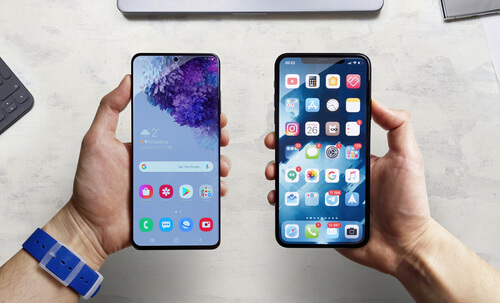
Mobile broadband lets you work anywhere, anytime. However, there’s more than one way to share 4G LTE internet access with all your devices.
These days, many tablets, hybrids, and notebooks offer the option of Wi-Fi-only or a model that supports both Wi-Fi and cellular data connections. These “Wi-Fi + Cellular” models feature a slot for inserting a tiny SIM card, allowing you to connect the device to a mobile data network. Alternatively, the iPad Pro’s Cellular models feature both a SIM card slot and an embedded Apple SIM.
If your devices aren’t blessed with cellular data access, or you’d prefer not to manage a fleet of SIM cards, you’ll find plenty of other ways to keep your devices online and connected. For businesses, considering phone rental options can be a flexible solution to equip your team with mobile devices ready for connectivity.
Smartphone hotspots
Apple and Android smartphones can create a “personal hotspot”. These generate a temporary Wi-Fi network to share the phone’s mobile data with your other devices. Connecting your device to this network is known as “tethering”.
Personal hotspots are handy for occasional use while eliminating the need to invest in extra hardware or sign up for another mobile service. The trade-off is that they take a toll on your phone’s battery, so a personal hotspot might not be a practical all-day solution.
Keep in mind that you’re also chewing through your smartphone’s mobile data allowance, especially if you have several devices relying on the hotspot.
USB dongles
If you need to regularly connect a notebook to mobile broadband, consider getting a USB dongle from your telco. It can be either on a monthly plan or with pre-paid data. Alternatively, if you have a business mobile plan, the dongle might be able to share in your business’ monthly mobile data pool.
USB mobile broadband dongles are compatible with PCs and Macs. They draw power from your computer but don’t take as harsh a toll on the computer’s battery as a personal hotspot does on your smartphone. The downside is that a dongle can only offer internet access to one device at a time. It also can’t connect to an Apple or Android tablet.
Mobile Wi-Fi hotspots
A mobile Wi-Fi hotspot offers mobile broadband access to any Wi-Fi-enabled gadget including notebooks, hybrids and tablets. They are able to support multiple devices simultaneously.
These palm-sized hotspots feature a built-in battery, recharged via a micro USB port. They have the option to draw power from your notebook’s USB ports. As with a USB dongle, a mobile Wi-Fi hotspot offers the choice of pre-paid or post-paid data. It has the option to share in your business’ monthly mobile data pool.
You’ll also find advanced mobile Wi-Fi hotspots that handle faster mobile broadband speeds, support more Wi-Fi devices and even feature Ethernet ports for connecting devices via Ethernet cable instead of Wi-Fi.






